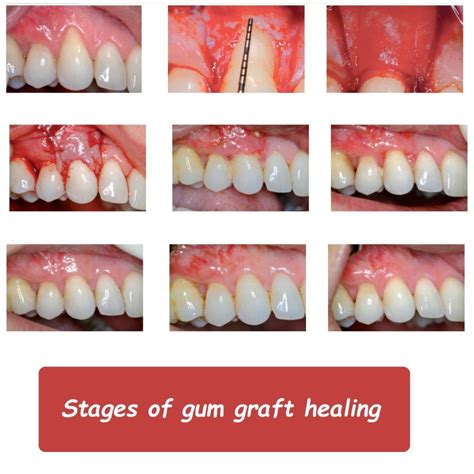Gum Graft Healing: Your Checklist for Recovery
A gum graft, also known as a gingival graft, is a common periodontal procedure used to treat gum recession, expose more tooth structure, or improve the overall health of your gums. Understanding the healing process and following a strict post-operative care regimen is crucial for a successful outcome. This comprehensive guide provides a detailed checklist to ensure your gum graft heals properly and efficiently.
What is a Gum Graft?
Before diving into the healing process, let's briefly review what a gum graft entails. During this procedure, a small piece of gum tissue is harvested from a donor site (often the palate) and grafted onto the recipient site (the area with gum recession). This graft helps to cover exposed tooth roots, prevent further recession, and improve gum aesthetics. The type of graft used depends on the specific needs of the patient and the extent of the gum recession.
Gum Graft Healing Timeline: What to Expect
The healing process for a gum graft typically takes several weeks, and progress can vary from person to person. You can expect the following stages:
- Immediate Post-Operative Period (Days 1-3): Expect some swelling, bleeding, and discomfort. Your dentist will provide pain medication to manage this. Keep the graft site clean and follow your dentist's instructions meticulously.
- Week 1-2: Swelling and discomfort should begin to subside. The grafted tissue will be sensitive and may appear slightly discolored. Good oral hygiene is paramount.
- Week 3-4: Most of the swelling and discomfort should be gone. The grafted tissue begins to integrate with the surrounding gum tissue.
- Weeks 4-6: The healing process nears completion. The grafted area should look and feel more natural, though full healing may take longer.
### How Long Does it Take for Gum Graft to Heal Completely?
Complete healing can take several months, even up to six months or longer, depending on the individual and the complexity of the procedure. During this time, regular checkups with your dentist are essential to monitor the healing progress and address any potential complications.
### What are the Signs of Gum Graft Infection?
It’s crucial to watch for signs of infection, which can significantly compromise the healing process. These include:
- Increased pain and swelling: If the pain becomes severe or the swelling worsens significantly after the initial few days, seek immediate dental attention.
- Excessive bleeding: While some bleeding is normal initially, excessive or prolonged bleeding should be reported to your dentist.
- Pus or foul odor: These are clear signs of infection and require immediate medical attention.
- Fever: A high fever may also indicate an infection.
Post-Operative Care: Your Checklist for Success
Following your dentist's instructions is paramount for successful gum graft healing. Here's a comprehensive checklist:
- Medication: Take prescribed pain medication and antibiotics as directed.
- Diet: Follow a soft food diet for the first few days, avoiding hard, crunchy, or spicy foods that could irritate the graft site.
- Oral Hygiene: Gently brush and floss around the grafted area, avoiding direct contact with the graft itself. Your dentist will provide specific instructions on how to best clean the area.
- Rinsing: Use a prescribed mouthwash or saltwater rinse to keep the area clean and help prevent infection.
- Ice Packs: Apply ice packs to the affected area to reduce swelling.
- Avoid Smoking: Smoking significantly impairs healing and increases the risk of complications.
- Rest: Allow yourself adequate time to rest and recover.
- Follow-up Appointments: Attend all scheduled follow-up appointments with your dentist to monitor the healing process.
### What Foods Can I Eat After a Gum Graft?
Choose soft, easily chewed foods to prevent irritation and injury to the healing graft. Examples include yogurt, applesauce, mashed potatoes, smoothies, and well-cooked pasta. Avoid hard, crunchy, or spicy foods until your dentist advises otherwise.
### Can I Brush My Teeth After a Gum Graft?
Yes, but gentle brushing is crucial. Avoid direct contact with the graft site, and use a soft-bristled toothbrush. Your dentist may provide specific instructions on proper brushing technique following your procedure.
### How Long Will I Be Sore After a Gum Graft?
Soreness and discomfort are common following the procedure. The severity and duration will vary, but it generally subsides within the first week or two. Pain medication can effectively manage discomfort.
By diligently following this checklist and carefully observing for any signs of complications, you can significantly increase the likelihood of a successful gum graft healing process and maintain optimal oral health. Remember, regular communication with your dentist is key throughout the recovery period. They are your best resource for personalized advice and care.

